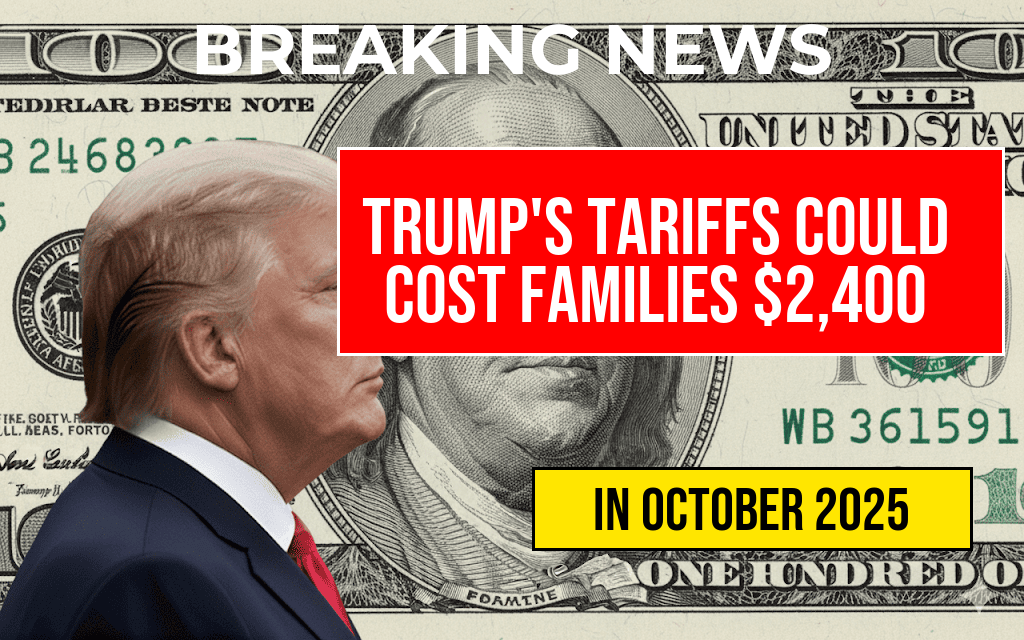Recent analyses suggest that the tariffs imposed by former President Donald Trump could lead to significant financial strain on American families. A report from the Forbes Finance Council indicates that these tariffs, often referred to as the “Turbulence Tax,” may result in an annual cost increase of approximately $2,400 for the average household. This financial burden stems primarily from elevated prices on imported goods, which have been affected by various tariffs across a range of sectors. As families navigate rising prices, understanding the implications of these tariffs becomes crucial for budgeting and financial planning.
Understanding the “Turbulence Tax”
The term “Turbulence Tax” has emerged to describe the indirect costs American families face due to tariffs. These tariffs, which were originally implemented to protect domestic industries, have led to higher prices on essential consumer goods. As these costs trickle down to households, the financial impact can be profound.
Breakdown of Costs
| Product Category | Estimated Cost Increase |
|---|---|
| Electronics | $600 |
| Clothing | $400 |
| Household Goods | $500 |
| Food Products | $900 |
| Automobiles | $1000 |
Impact on Different Sectors
The repercussions of these tariffs are not uniform across all sectors. Some industries have been hit harder than others, leading to varying levels of cost increases:
- Electronics: Tariffs on components and finished goods have raised prices, affecting everything from smartphones to household appliances.
- Clothing: Imported textiles face higher tariffs, which has led to increased retail prices for apparel.
- Food Products: Agricultural tariffs have impacted prices on common food items, forcing families to adjust their grocery budgets.
- Automobiles: Additional tariffs on foreign vehicles have made car ownership more expensive for American consumers.
Consumer Responses
As families confront rising costs, many are adjusting their spending habits. A survey conducted by the Nielsen Company found that over 60% of respondents have shifted their purchasing behavior to manage their budgets more effectively. This includes:
- Seeking out sales and discounts.
- Buying in bulk to minimize per-unit costs.
- Choosing generic brands over name brands to save money.
Political Implications
The continuation of tariffs has sparked significant debate among policymakers. Proponents argue that tariffs can protect American jobs and industries, while critics contend that the financial burden on families outweighs potential benefits. As the U.S. navigates its economic recovery, understanding the implications of these tariffs will be crucial for both consumers and lawmakers.
Future Outlook
Looking forward, the future of these tariffs remains uncertain. Economic analysts suggest that shifts in trade policy could either alleviate or exacerbate the financial pressures on families. As the Biden administration explores potential adjustments to trade agreements, the possibility of tariff reductions could offer some relief.
In the meantime, families are likely to continue feeling the effects of the “Turbulence Tax,” making it imperative for consumers to remain informed and proactive in managing their household budgets.
Frequently Asked Questions
What are Trump’s tariffs and how do they affect families?
Trump’s tariffs are taxes imposed on imported goods, which can lead to higher prices for consumers. As a result, families may face increased costs, estimated at around $2,400 annually, due to the “Turbulence Tax.”
What is the “Turbulence Tax”?
The “Turbulence Tax” refers to the economic impact of tariffs that cause instability in prices, leading to higher costs of living for families. This term highlights how trade policies can create financial strain on households.
Which products are most affected by these tariffs?
The tariffs primarily target a variety of imported goods, including electronics, clothing, and household items. These increased costs can directly affect family budgets as prices on these essential products rise.
How do tariffs impact the economy as a whole?
Tariffs can lead to a decrease in consumer spending and can disrupt the overall economy. Higher prices can reduce demand for certain products, which may affect business growth and lead to job losses in the long run.
Are there any potential benefits to implementing tariffs?
Some argue that tariffs can protect domestic industries from foreign competition, potentially leading to job growth in certain sectors. However, these benefits must be weighed against the higher costs faced by consumers and the broader economic impact.

Leave a Reply